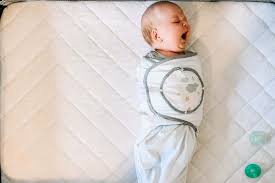
In the realm of newborn sleep, there exists an enigmatic realm known as active sleep. What is this peculiar state, you may ask? It’s a riveting world were your tiny tot is surprisingly active, despite being fast asleep. Join us on a journey to unravel the mysteries of active sleep in newborns, arming you with knowledge to navigate its complexities and ensure your little one’s slumbering bliss.
– Unveiling the Enigmatic world of Active Sleep in Newborns: A Comprehensive Understanding
What to Watch For and What to Do
Rapid eye movements (REM): You’ll notice your newborn’s eyes darting back and forth under their closed eyelids.
Irregular breathing: Their breathing may become faster or slower, and they may even pause for a few seconds.
Minor twitches: Their arms and legs may twitch or jerk slightly.
Facial expressions: They may make faces that seem like they’re dreaming, such as smiles, frowns, or grimaces.
* Vocalization: They may make soft sounds, such as gurgling or cooing.
Keep in mind that all these movements and sounds are entirely normal during active sleep and shouldn’t cause any concern. Simply observe your newborn and let them sleep undisturbed to enjoy the benefits of this essential sleep stage.
– Decoding the Rhythms of Active sleep: Patterns, Benefits, and Developmental Significance
Decoding the Rhythms of Active Sleep
Active sleep is characterized by rapid eye movements (REM), which are associated with dreaming. It is also known as REM sleep and occupies approximately 50% of a newborn’s total sleep time. During active sleep,the baby’s breathing becomes more irregular and their heart rate and blood pressure increase. Their muscles are also relaxed, which prevents them from acting out their dreams. Active sleep is essential for the healthy growth of a newborn’s brain and nervous system,as it helps them to learn and process new facts.
– Watching Over Your Newborns Active Sleep: Identifying Signs and Addressing Concerns
Identifying Signs of Active Sleep in Newborns
During active sleep, newborns may exhibit a range of signs that indicate their increased activity level. these include:
Rapid eye movement (REM): The baby’s eyes will move rapidly under the eyelids, indicating deep REM sleep.
Increased breathing rate: The baby’s breathing may become faster and less regular.
Twitching or jerks: The baby may twitch their arms,legs,or head,or make small involuntary movements.
Facial grimacing: The baby may make faces or grimace, which may appear restless or distressed.
* Crying or fussing: Some babies may cry or fuss during active sleep due to the increased brain activity.
- Nurturing Active Sleep in newborns: Creating a Supportive Environment for Restful Slumber
Creating a Supportive Environment:
Establish a consistent sleep-wake cycle by feeding, bathing, changing diapers, and playing with your newborn at regular intervals. This helps regulate their body clock and promotes a healthy sleep-wake routine. In their sleeping space, create a calm and dark environment that is conducive to rest. Soft, soothing music or white noise can help block out distracting sounds. Ensure your baby has a cozy and safe sleep surface, such as a breathable crib mattress or a cozy swaddle.
Wrapping Up
As we bid farewell to this exploration of active sleep in newborns, let us remember that this unique state of slumber is a lovely ballet of growth and development. The sights, sounds, and movements may seem like mere chaos, but they are the symphony of a busy brain hardwired to learn and thrive. Trust the rhythm of your little one’s active sleep, knowing that each flutter and grimace is a testament to the wonder of life unfolding before our very eyes. For in the realm of dreams, the seeds of a shining and remarkable future are being sown, one peaceful night at a time.

Leave a Reply